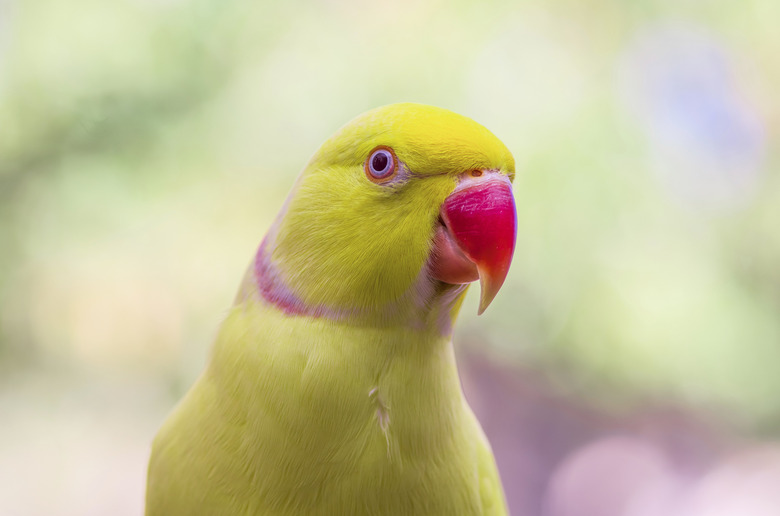How To Tell If My Indian Ringneck Is Male Or Female
From southern India to your living room, the Indian ringneck parrot, also called the Indian ringneck parakeet or IRN bird, is a popular choice for bird lovers. Pretty to look at and quite conversational, this is an intelligent, engaging bird. If you're unsure if your ringneck is male or female, a DNA test can provide the answer, or you can wait a few years and figure out his—or her—gender yourself.
Indian ringneck parrot appearance
Indian ringneck parrot appearance
As a medium-sized parrot, the Indian ringneck, also known as the rose-ringed parakeet, weighs between 4 and 5 ounces and measures 14 to 17 inches, head to tail. About half of his length is taken by his tail feathers; his wings reach about 6 inches long. His hooked beak is a reddish-orange, tipped in black, and his plumage is usually a bright green.
Indian ringneck parrot development
Indian ringneck parrot development
If your Indian ringneck is sexually mature, you can take a look at him and figure out if he's really a she. Male ringnecks are usually sexually mature by age three. The male of the species develops a ring around his neck, often starting to become apparent by about 17 months old. The thin black ring runs back from his throat, becoming thinner on the sides of the neck, where it runs into a light-colored collar on the nape of his neck.
Female Indian ringneck parrots mature about a year earlier than their male counterparts. The female may have a very pale ring, but it isn't a defined black line.
Other gender clues
Other gender clues
The female ringneck tends to have a stockier build and thicker feet than the male, though his tail is slightly longer. If your parrot's head looks more square in shape and the colors around his cheeks are bright, he's more likely to be a male. Her beak isn't as pronounced as his, and her face is more rounded.
Your parrot's behavior may betray his — or her — gender. Put your ringneck in front of a mirror and watch for a reaction. The male will take a bow, after opening his wings to a heart-shape, and his pupils will shrink in size as he puts on this show. The lady ringneck usually clucks and tilts her head back.
The DNA test
The DNA test
You may not care for the wait-and-see approach, but that's okay if you're willing to pay for a DNA test. The test is fairly simple and depending on the testing company, you can provide a sample feather or clip your bird's toenail for a tiny blood sample.
The testing company will provide a collection kit and will mail, fax, or email the results to you as soon as testing is complete. If you prefer, your veterinarian can also take a blood sample to send to the lab for testing. DNA testing for gender is over 99.9 percent accurate as long as the samples are uncontaminated.
Surgical sexing of birds
Surgical sexing of birds
Another option to definitively determine the sex of your parrot is surgical sexing. This is a riskier procedure, as your bird will have to go under anesthesia. The veterinarian will perform an endoscopy to visually inspect your parrot's testicles or ovary. Due to the risk of surgery, a DNA test is typically preferred, but if you plan on breeding your parrot, this method is an opportunity for your vet to make sure your bird's reproductive system is healthy.
